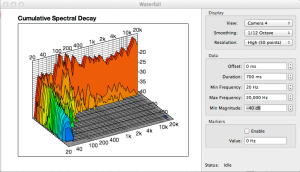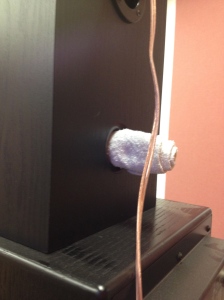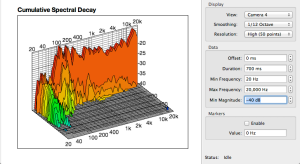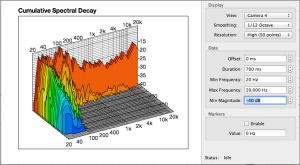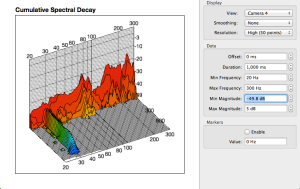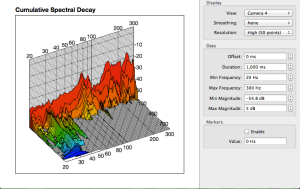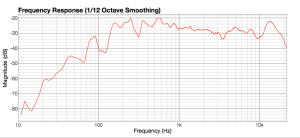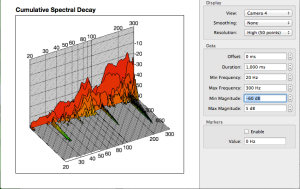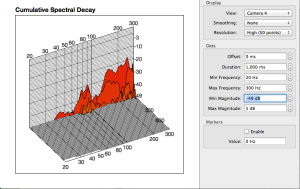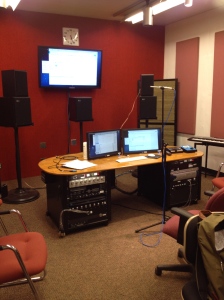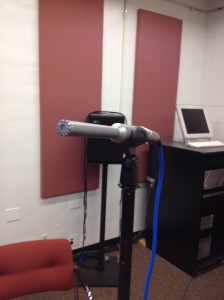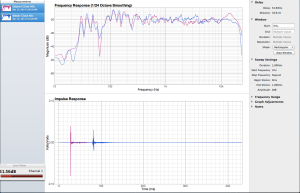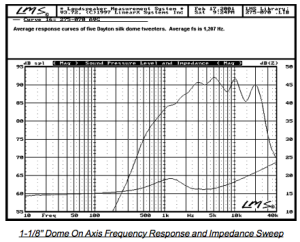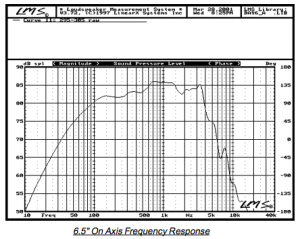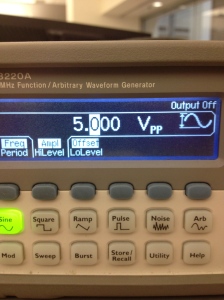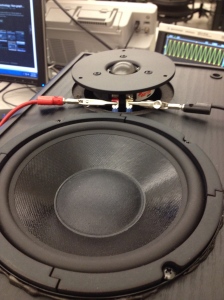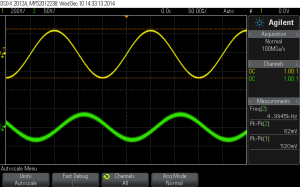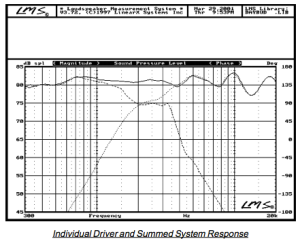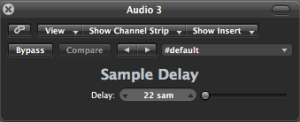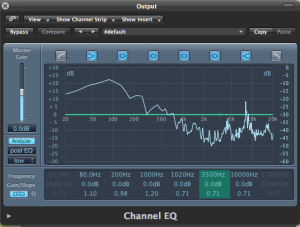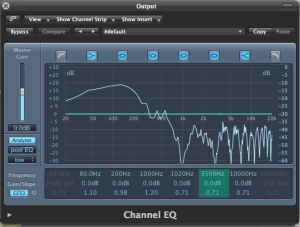A port tube can extend the low-end response of a speaker beyond the lowest frequencies that can be produced by the woofer at an adequate volume. However, one of the drawbacks is that it takes time for the port tube resonance to die out. The best way to represent this is with a waterfall plot.
This shows the amplitude of all the frequencies decaying in time. The longest resonance is near the same frequency as the port tube. And when we plug the port tube with a towel…
…. We can see that the resonance of the tube dies much more quickly.
Subjectively, I want to hear more bass when I listen to the BR-1s, my speaker amplifier has a basic EQ, and the speakers sound more “flat” to me when I turn up the bass on the amp.
I find it interesting that what sounds “flat,” and subjectively pleasing to me is actually far from an ideal flat response.
In order to better understand that data from the previous measurements, I also took some measurements at my apartment.
PORT NOT PLUGGED
PORT PLUGGED
The graphs above show how the minimum value of the amplitude axis can greatly affect how the graph is interpreted. I tried to have the minimum value of the amplitude axis just slightly above the noise floor, which was at about -40dB.
I also took measurements at my apartment with my Presonus M7 condenser microphone.
The Dayton Audio measurement microphone was clearly a good choice as the Presonus microphone leaves out a lot of the bass information.

